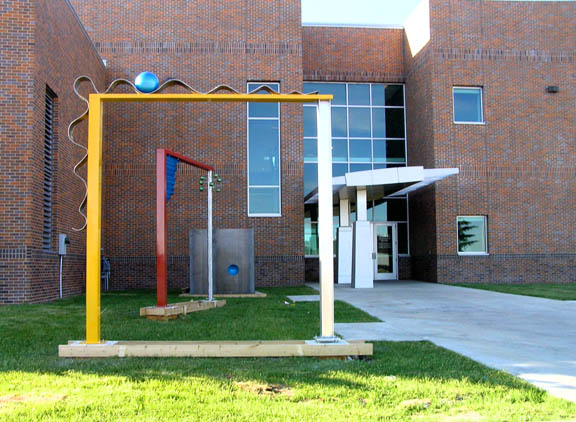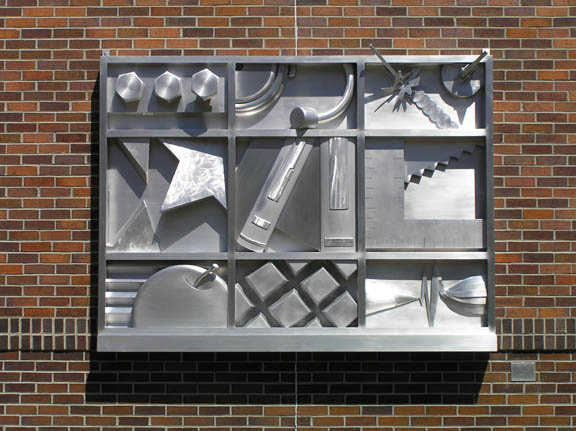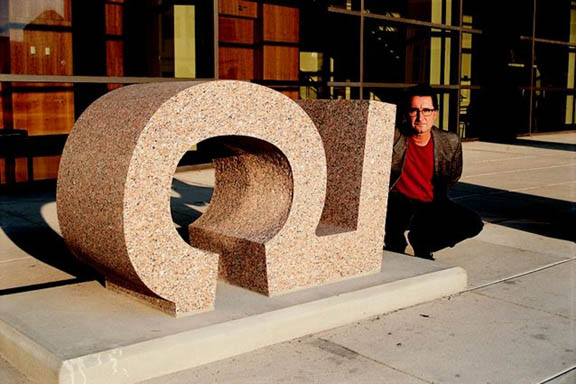The Renaissance of the Minnesota State Arts Boards Artists Registry
Britt Aamodt reports on how the Minnesota State Arts Board is commissioning work by Minnesota artists for the Percent-for-Art in Public Places program. Nicole Simoneaux hopes to refine the boards registry into one of the best in the nation.



Three years ago the idea of turning the Minnesota State Arts Board’s Artists Registry into a premier resource for public artists would have seemed presumptuous, or at best, a case of misdirected enthusiasm, as the MSAB struggled to contend with a 32 percent budget cut.
Staff members lost jobs. Programs scaled down and reorganized. Grant monies shrank. The arts were feeling the pinch of Minnesota’s budget crisis.
Jump forward to 2006. MSAB program officer Nicole Simoneaux acknowledges they still have a long way to go. “We haven’t really even started to recoup those losses. We’re operating on a much smaller scale than we should be for a state with such rich cultural activity going on.”
Yet Simoneaux is undeterred. This young arts administrator, who came to the State Arts Board from the Madison Arts Commission in May, has two strong programs to work with—Percent for Art in Public Places and the Artist Initiative grants—and is planning a digital overhaul of the Artists Registry.
Under Minnesota statute, state buildings with construction or renovation budgets of $550,000 or more can set aside money for the purchase of art to be integrated into the site plan or architecture. The so-called Percent for Art program works through the MSAB’s Artists Registry to locate artists and connect them to building projects.
Traditionally public art is a tough field to crack; however, Simoneaux hopes with the roll-out of a fully digitized Artists Registry in 2007 to expose more artists to potentially career-building opportunities.
“The application is good for four years. So, the idea is that artists upload their images and resume to the registry once every four years, and then they’re considered for every public art project that the state of Minnesota does that meets their profile. So if you’re a painter, any time we do a painting project, the site committee will be looking at your digital images.”
Simoneaux cautions that this in no way guarantees work. Site committees will be basing selections on quality of work (digital images), professional experience (as evidenced by the resume) and compatibility of the artist’s style to the design and theme of the building.
Caveats aside, the new Artists Registry will be a boon for artists as well as selection committees. Committees will no longer have to trek to the Arts Board’s St. Paul offices to sift through slide sheets. With a password, they can search the online database from any computer in the state, or the world for that matter.
Artists will feel the benefits too. No more costly slides. No more postage. And the MSAB Artists Registry is free and open to all artists, both in and out of Minnesota and across media—sculpture, painting, weaving, graphic design, folk art, new media, etc.
Though 2003’s budget cuts had no direct impact on the registry, Simoneaux estimates that without them the registry could have been twice its current size, and equipped with a sophisticated searchable interface that would enable users to search by name, media and geographic region. The registry hovers at just under 900 artists. The Minnesota Citizens for the Arts website identifies over 30,000 artists in Minnesota. So one of Simoneaux’s immediate goals is to increase participation.
Two Minnesota artists who have benefited from the MSAB Artists Registry are Caprice Glaser and Steven Woodward.
Glaser says her graduation some thirty years ago from the Art Institute of Chicago was a rude awakening. “The graduation speaker said, ‘You do realize, don’t you, that only one percent of you will probably make a living at your chosen field?’”
The St. Paul sculptor never considered anything else. She had to be an artist. And one way she could do that full-time was through public art.
Eight years ago, she signed up with the MSAB Artists Registry, and this summer finished a MSAB-mediated project for Alexandria Technical College. She is also one of the registry artists being considered by a site committee from St. Cloud Technical College.
Public art can be an artist’s means to self-support, says Glaser, citing the $100,000 cap on Percent-for-Art projects, but adds that most commissions fall within the $10,000-$20,000 range.
“And you have to be able to write terrific proposals. If you can’t afford a photographer, you have to photograph your own work. You have to stand up in front of people and make proposals. Then you have to send out invoices and make reports.” Glaser says sometimes she feels like she spends more time in the office than the studio. But, still, there’s no better job for her than art.
Steven Woodward, whose installation “Shunyata” ($280,000 worth of granite carved into numbers) sits on the capitol grounds in downtown St. Paul, is currently working with Simoneaux and the State Arts Board on a project for Mankato State University’s auto center. He has also worked with the universities of Minnesota and Wisconsin, and is on the registries of Calgary, Las Vegas, Atlanta, San Francisco and Phoenix.
He’s noticed a trend; most registries are going digital. “I’m 53 years old and I never worked with a computer till five years ago. Now I’m running my own website. Going digital might leave a lot of artists behind, but it’s the coin of the realm now.”
Simoneaux understands these concerns and says she is willing to work with artists who may not be able to access or navigate the online registration form at www.arts.state.mn.us. Those artists should contact her at 651-215-1617 or nicole.simoneaux@arts.state.mn.us.
At present, the registry only accepts applications twice a year: in the fall with a November 15 deadline and in the spring with a May 15 deadline. Once the registry is complete, sometime in 2007, Simoneaux wants to do away with deadlines. That way, artists would be able to log on anytime to update images and resume.
As to the future, Simoneaux proposes, “At some point, I‘d like to get the Artists Registry to a place where it’s open not just to municipal and state agencies but to private corporations. I’d also love to see the state of Minnesota and the MSAB be known nationally for the quality of its artists. And the registry is one way of doing that.”
Digital Work Sample Guidelines
Resolution: 72 dpi
Dimensions: 800 pixels at its largest dimension
File format: JPEG. Save image as a .jpg using Photoshop’s “Save As” command with a compression/quality setting of 9 (90%). The resulting file size should be around 500K.
File Naming: The filename must begin with your last name and have a .jpg extension. It must not include spaces or any non alpha numeric characters.
Do not use a period anywhere in the filename except to separate the name from the jpg extension.